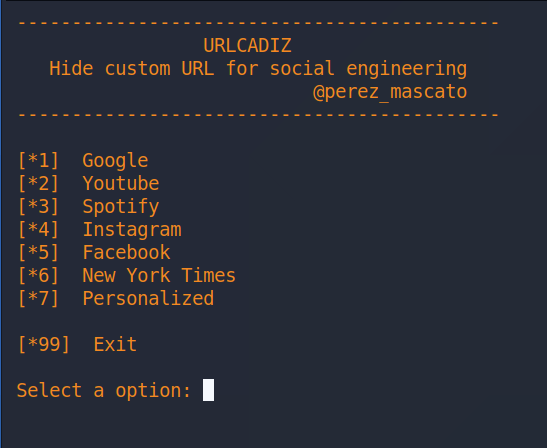URLCADIZ - Handy Addition To Social Attacks
This popped up on LinkedIn earlier today, so I went to confirm the software and see if it would fit into the current workflow well. Something as simple as this has to have a place, otherwise, why would it have been created in the first place?
After logging into my Kali VM, moved over to /usr/share (or wherever you store scripts and programs) and input the following:
git clone https://github.com/PerezMascato/URLCADIZ
If necessary, do the following:
pip3 install pyshorteners
Then to run the program:
python3 URLCADIZ.py
The first screen prompts for the type of social URL you would like to run through tinyURL.

While looking at this screen, the first thing that went through my mind is a combination of this with BadPDF or SET. While SET may already do something like this out of the box, this one script can bind other social engineering tools that are not yet in SET.
Next screen...